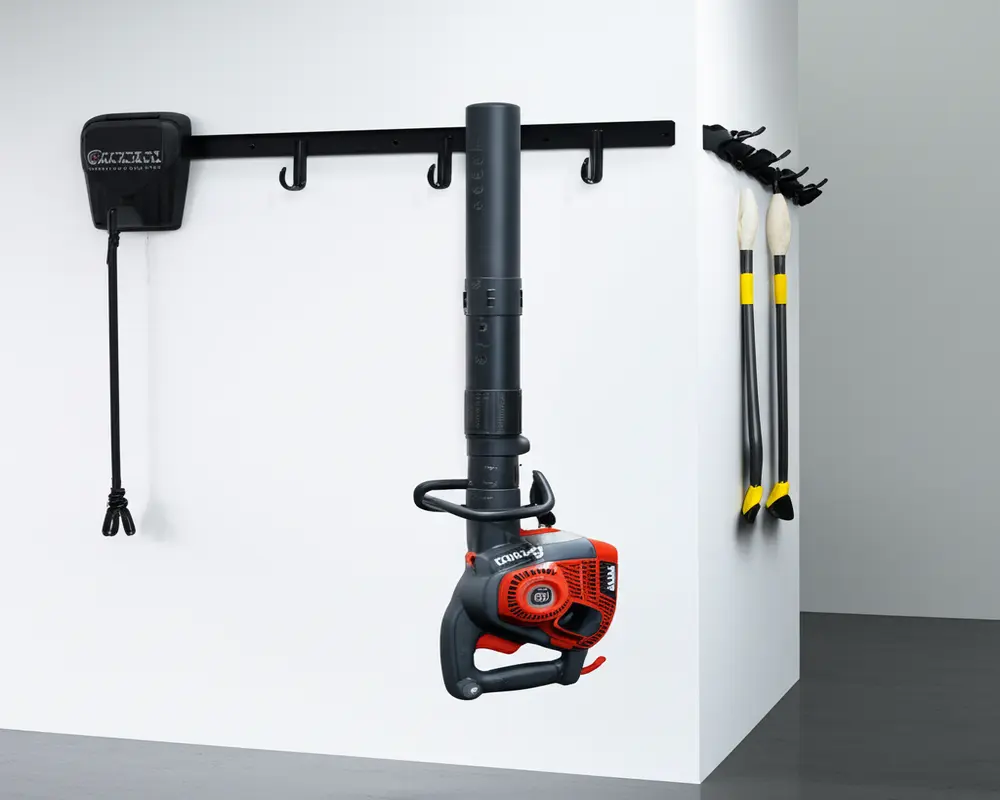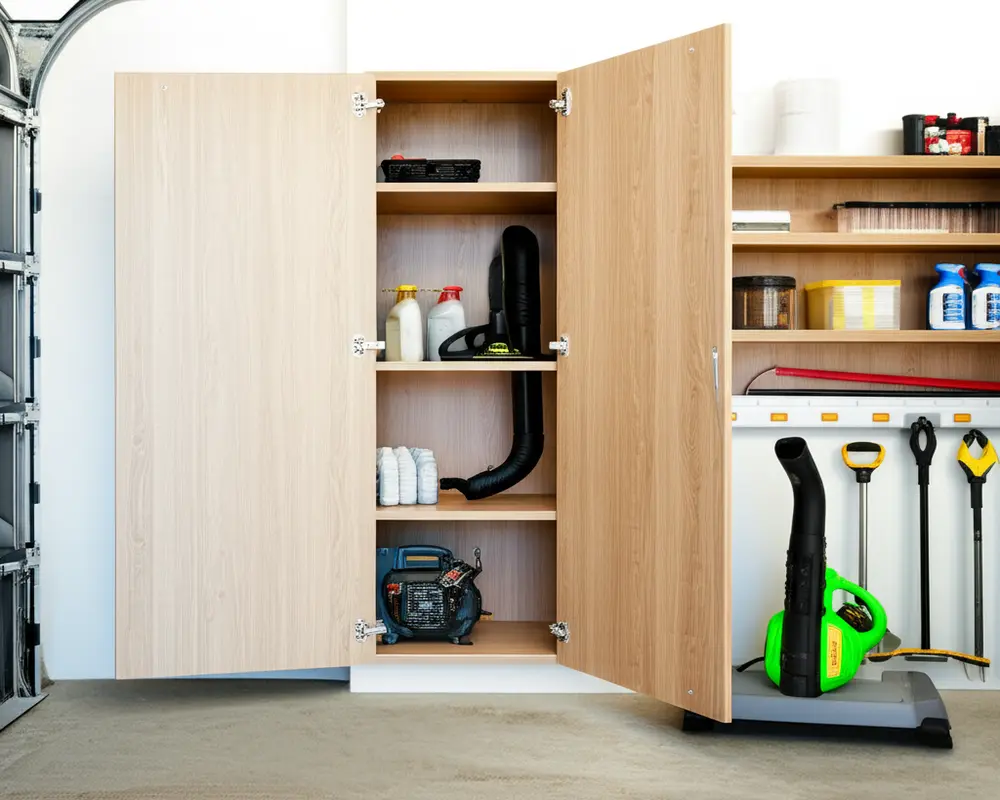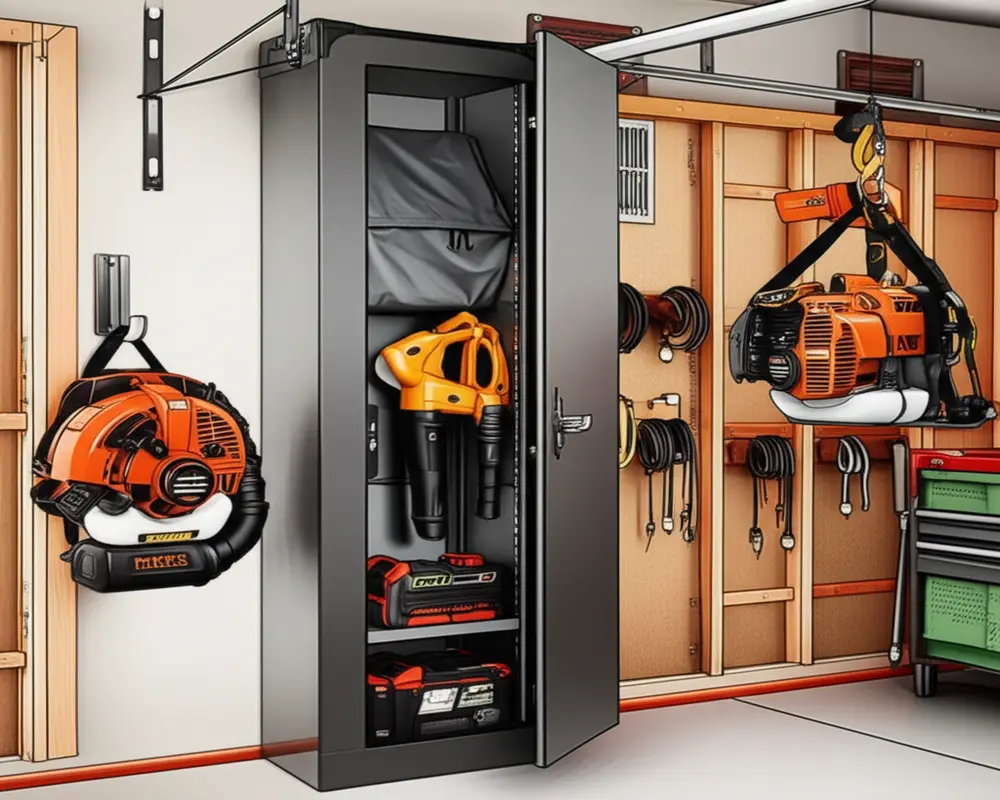The Ultimate Guide to Indoor Leaf Blower Storage: Space-Saving, Safe & Smart Solutions for Every Home
Introduction: Taming the Blower Beast Indoors
Is your leaf blower taking up too much room in your garage or utility space? Storing this bulky, often fuel-powered tool indoors can be a challenge, especially when space is limited and safety is a priority. This guide provides comprehensive indoor leaf blower storage solutions tailored to different home setups—whether you have a garage, shed, utility room, or even an apartment. We'll explore ways to keep your blower safe, organized, and protected, ensuring it’s ready for use year-round while maximizing your living space efficiently.
Drawing on expert knowledge in home organization and equipment maintenance, this article offers practical, safe, and proven strategies to handle your leaf blower storage needs effectively.
Why Indoor Storage? Benefits & Key Considerations
Storing your leaf blower indoors carries several advantages. It safeguards the tool from weather damage, theft, and wear, helping extend its lifespan. Indoor storage also keeps your blower accessible and ready, especially during peak leaf-clearing seasons.
Pre-Storage Safety & Preparation
Before storing, understanding safety protocols based on the blower type is crucial.
- Gas-powered leaf blowers require fuel drainage to prevent leaks and reduce fire risk. Proper ventilation is essential indoors to avoid carbon monoxide buildup and flammable fume hazards.
- Electric and cordless blowers need careful battery management—removing batteries for storage, maintaining charge levels, and controlling temperature to prevent battery damage.
Preparation steps include thorough cleaning, checking the engine or motor, lubricating moving parts, draining or stabilizing fuel, and removing or charging batteries accordingly.
Assessing Indoor Spaces
Consider your available spaces: garages often offer ample room and ventilation; utility rooms and sheds provide sheltered environments; apartments require compact, creative solutions; basements and attics can be used but watch for moisture or temperature extremes that may harm your equipment.
Top Indoor Leaf Blower Storage Solutions
A. Wall-Mounted Storage: Vertical Maximization
Utilizing vertical space is one of the smartest ways to store your leaf blower indoors without sacrificing floor area.
Heavy-duty hooks and hangers designed to hold the blower's weight securely allow for easy access and neat organization. Installing pegboard or slatwall systems adds versatility, enabling multiple tools to be stored together using various attachments. Track and rail systems provide adjustable, robust support for different blower sizes and weights.
For DIY enthusiasts, crafting custom wall-mounted racks with basic materials and tools offers a tailored storage solution that fits your space and style preferences.

B. Overhead/Ceiling Storage
Ceiling-mounted options free up both wall and floor space. Ceiling hoists and lifts are especially suitable for bulky backpack blowers, suspending them safely out of the way. Overhead shelving can also be effective, provided the shelves have adequate clearance and weight capacity.

C. Cabinet & Enclosed Storage
Tall utility cabinets offer dust protection and keep your blower out of sight while maintaining organization. Custom-built-in cabinetry can maximize awkward spaces like corners or narrow walls. Tool chests and lockers provide smaller, lockable options for accessory storage and added security.

D. Freestanding & Mobile Solutions
Vertical tool racks and stands organize your blower upright, ideal for quick grab-and-go use. Rolling tool carts or trolleys add mobility, letting you transport your blower and related gear easily within your workspace.
E. Creative & Small-Space Hacks
In tight quarters, consider behind-the-door hangers, repurposed furniture storage, foldable designs, or vertical closet organizers. Such solutions creatively use overlooked spaces to provide compact leaf blower storage solutions without cluttering your home.
Choosing Storage by Blower Type
Storage needs vary depending on the blower type:
- Handheld electric and cordless blowers suit small hooks and cabinets, focusing on battery care and cord management.
- Handheld gas blowers require ventilated areas with secure mounts and clear safety warnings due to fuel and emissions.
- Backpack blowers demand robust mounts or overhead storage with enough space to accommodate their bulk and weight.
- Corded blowers benefit from storage solutions that emphasize cord wraps and organized cord management to prevent tangling and damage.
Essential Storage Accessories & Organization Tips
To maintain your blower’s condition and your storage area’s order, consider these accessories:
- Dust covers or storage bags to shield equipment from dirt and debris.
- Cord wraps and hose hangers to keep cables neat and tangle-free.
- Labels and inventory systems to identify tools quickly and keep track of accessories.
- Designated storage zones for different equipment types enhance workflow and prevent clutter.
- Regular decluttering sessions ensure your storage remains efficient and accessible.
DIY Indoor Leaf Blower Storage Projects
For those who prefer hands-on solutions, building your own storage can be both satisfying and practical.
A simple wall-mount rack can be made using sturdy wooden boards and heavy-duty hooks. Follow safety guidelines to ensure secure installation capable of holding the blower’s weight.
Alternatively, a custom cabinet insert with shelves and dividers can organize your blower alongside related tools, optimizing cabinet space.
Maintaining Your Stored Leaf Blower
Proper maintenance while in storage is key to prolonging your blower’s life:
- Conduct periodic inspections to identify wear or damage early.
- Maintain battery health by charging and cycling batteries as recommended by manufacturers.
- Check fuel levels and use stabilizers if storing fuel in the blower for extended periods.
- Keep storage areas clean and dry to prevent rust and corrosion.
Conclusion: Achieve Organized and Safe Indoor Storage
By implementing the solutions discussed—vertical wall-mounted storage, overhead hoists, enclosed cabinets, and creative small-space hacks—you can store your leaf blower safely and efficiently indoors. Prioritizing safety protocols, especially for gas-powered blowers, ensures a hazard-free environment. Regular maintenance and organizational accessories will keep your equipment in prime condition, ready for any leaf-clearing task.
Embrace these tips to transform your storage space, freeing up room while protecting your investment and ensuring your leaf blower remains a reliable tool for seasons to come.
Frequently Asked Questions (FAQ)
Can I store a gas leaf blower in the basement?
Storing a gas leaf blower in a basement is possible if the area is well-ventilated to prevent harmful fume buildup. Ensure fuel is drained or stabilized, and the blower is stored away from ignition sources to minimize fire risk.
What is the best position for storing a leaf blower?
Storing a leaf blower upright is ideal to prevent fuel or oil leaks and to maintain internal components. Using wall hooks or stands ensures the blower remains stable and accessible.
How much space do I need for indoor leaf blower storage?
Space requirements depend on the blower size; handheld models need only a few square feet or wall space, while backpack blowers require larger mounts or overhead clearance. Plan storage based on your blower's dimensions and access needs.
How can I prevent dust buildup on my stored leaf blower?
Use dust covers or storage bags and keep the storage area clean and dry. Enclosed cabinets also help protect the blower from dust accumulation.
Is it safe to store a leaf blower with fuel inside?
It is generally safer to drain fuel before storage to prevent leaks, fire hazards, and engine damage. If fuel must remain, use stabilizers and store the blower in a ventilated area away from heat sources.
What is the best way to store a backpack leaf blower indoors?
Backpack blowers benefit from heavy-duty wall brackets or ceiling hoists that support their weight and bulk, keeping them off the floor and out of the way. Secure mounting also enhances safety and extends the equipment’s lifespan.
Supporting Visuals
Images for each storage type, DIY project photos, infographics comparing solutions, and safety diagrams for gas blower storage enhance understanding and provide practical visual guides.
For insights on other garden tools and their maintenance, consider reading our Hand Cultivator Buying Guide, which complements your toolkit organization efforts.
To ensure compliance with safety standards in home storage, refer to the Home Storage Safety Tips provided by the U.S. Consumer Product Safety Commission.
Google’s Helpful Content Guidelines offer valuable insights on creating user-focused content that builds trust and authority.

